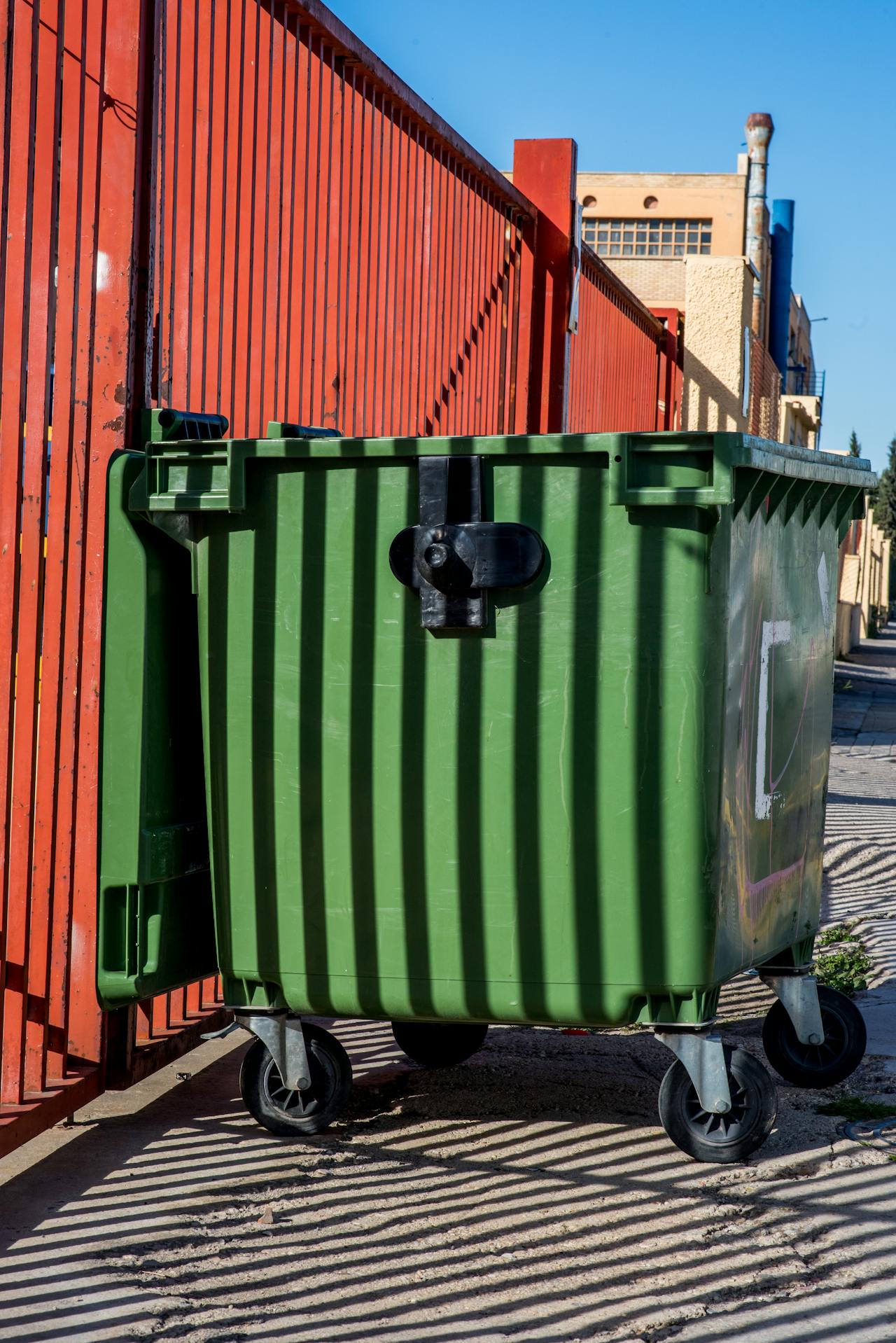Back to Listing
Comparing Roll On/Off Hire Options: Advantages of

Open versus Enclosed Containers
When it comes to choosing the right container for your waste management needs, you may find yourself debating between open and enclosed roll on/off options. Open containers are ideal for general waste and can accommodate larger volumes, while enclosed containers offer enhanced security for sensitive materials. Understanding these differences will help you make the best choice for your specific project requirements.
Open roll on/off containers provide greater accessibility and ease of loading, perfect for various construction and renovation projects. They are often used for bulky items and mixed waste, allowing for a straightforward disposal process. On the other hand, enclosed containers are essential when you’re dealing with confidential waste or materials that require protection from the elements.
As you weigh your options, consider factors such as the type of waste you need to dispose of, site access, and any security concerns. This guide will take you through the key features and benefits of both open and enclosed containers, helping you to make an informed decision that suits your needs.
Understanding Roll On/Off Hire Services
Roll On/Off hire services offer an efficient solution for waste management, especially for large projects. These services include different types of containers designed for specific needs. Understanding the types and design principles can help you choose the right option for your project.
Types of Containers: Open vs Enclosed
Roll On/Off containers come in two main types: open and enclosed.
-
Open Containers: These have an open top, making loading and unloading simple. They are ideal for bulky waste, such as construction debris. The open design allows for quick access, which can save time on larger projects.
-
Enclosed Containers: Also known as closed containers, these offer added security. They are perfect for confidential or sensitive materials, as they help protect against theft and weather damage. Enclosed options often have reinforced steel walls, enhancing safety and durability.
Both types have their advantages, so evaluating your specific needs is crucial when deciding.
Key Principles and Design Considerations
When selecting Roll On/Off containers, several important principles should guide your choice.
-
Structural Integrity: Ensure the container is made from high-quality steel. This enhances durability and safety during transport.
-
Capacity: Choose the right size based on your project's waste volume. Larger containers can hold more, reducing the number of trips needed.
-
Accessibility: Consider how easy it is to load and unload your materials. Open containers may be easier for stacking large items.
-
Regulations: Be aware of any local regulations regarding waste disposal. Compliance can save you from potential fines.
When you understand these principles, you can make an informed choice that best suits your waste management needs.
Evaluating Container Sizes and Materials
When selecting the right roll-on/off container, understanding sizes and materials is crucial to meet your project needs. Container sizes can vary significantly, and the materials used can greatly affect durability and safety.
Standard and Mini Skip Sizes
Container sizes are often categorised into standard and mini skips. Standard skips typically range from 6 cubic yards to 16 cubic yards. These are ideal for larger projects such as renovations or commercial waste disposal.
Mini skips, on the other hand, are usually around 2 cubic yards to 4 cubic yards. They’re great for smaller tasks, like garden clean-ups or minor home renovations. Choosing the right size ensures you won’t pay for unnecessary space or have to make multiple trips.
It is essential to assess the volume of waste you expect to produce. This evaluation helps in selecting a container that fits your project size and waste type effectively.
Material Selection for Durability and Safety
The materials used in constructing skips can determine their longevity and effectiveness. Most skips are made from high-quality steel, offering strength and robustness. Steel containers resist corrosion and are able to hold heavy materials securely.
If you're considering enclosed options, these often have steel walls and a solid roof, which protect contents from the elements. This is particularly important for construction sites, where rain or wind can affect safety.
Look for containers that meet safety standards. This not only ensures durability but also compliance with local regulations. Strong construction reduces the risk of accidents, making your project safer for everyone involved.
Waste Management and Disposal
Effective waste management is crucial for sustainability. Understanding the treatment processes and regulatory compliance will help you make informed decisions when hiring waste containers.
Waste Treatment and Environmental Impact
Waste treatment involves different processes to manage waste effectively. Common methods include recycling, composting, and incineration. Each method has its own environmental impact.
- Recycling helps reduce landfill waste by converting materials like paper, glass, and plastics into new products.
- Composting transforms organic waste into nutrient-rich soil, promoting a circular economy.
- Incineration generates energy but can release harmful pollutants if not properly managed.
When choosing a Roll On/Roll Off container, consider how your waste will be treated. Select a provider that focuses on environmentally friendly practices. Your choice can significantly influence local ecosystems and reduce carbon footprints.
Waste Disposal Regulations and Compliance
Compliance with waste disposal regulations is mandatory. Different types of waste have specific guidelines affecting how they should be managed. Failure to follow these rules can lead to fines and legal issues.
- Hazardous waste requires special handling and disposal methods, while general waste has fewer requirements.
- Local authorities often set the guidelines on where and how waste containers can be placed and used.
You must be aware of these regulations to avoid complications. Partnering with a knowledgeable waste management provider can ensure you're compliant with all necessary requirements for your project. Understanding these regulations protects the environment and your business.
Optimising Customer Experience in Skip Hire
To enhance your experience in skip hire, focus on improving customer service and ensuring safety throughout the process. By implementing effective online booking and prioritising customer satisfaction, you can make hiring skips easier and more reliable.
Enhancing Customer Service Through Online Booking
Online booking systems can significantly improve your experience. These platforms allow you to reserve skips quickly and efficiently. You can choose the type and size you need without lengthy phone calls or visits.
Consider features like:
- User-Friendly Interface: An easy-to-navigate website enables you to access the service without hassle.
- Instant Quotes: Get immediate pricing to help you budget better.
- Flexible Scheduling: Choose your drop-off and pick-up times, accommodating your schedule.
These improvements can streamline the process, making it more convenient for you.
Achieving Customer Satisfaction and Safety
Customer satisfaction hinges on more than just service-quality; safety is also crucial. Ensuring that the skip hire company follows safety regulations gives you peace of mind.
Key aspects include:
- Well-Maintained Equipment: Ensure the skips are in good condition and meet safety standards.
- Clear Instructions: Receive easy-to-follow guidelines on how to load your skip safely.
- Responsive Support: Access to customer service that quickly addresses questions or concerns boosts satisfaction.
Prioritising these factors not only enhances your experience but also builds trust with the hire company.
Quality Assurance and Industry Standards
Ensuring the safety and reliability of roll on/off containers involves rigorous quality assurance and adherence to industry standards. This section discusses essential processes like inspection, testing, and the role of industry agents during challenging times like a pandemic.
Inspection, Testing, and Marking of Containers
Regular inspection of roll on/off containers is crucial for maintaining safety and performance. You should ensure that containers are inspected by qualified personnel who can identify any damage or flaws. This includes checking the structural integrity of the beam, hinges, and joints.
Testing processes should include load tests to confirm the container can handle specified weights. Competent professionals should perform these tests to ensure compliance with safety regulations. Additionally, all containers must have markings that indicate their capacity and other relevant specifications. These markings help users understand limits and ensure safe usage.
The Role of AIS and Industry Agents During Pandemic
During the pandemic, the role of the AIS (All-Inclusive Services) and industry agents became even more significant. You should rely on these agents for guidance on safe container practices during uncertain times. They provide knowledge on adapting services to comply with health guidelines.
Agents can help navigate potential operational challenges. Their expertise ensures that protocols are in place for maintaining quality assurance, even when face-to-face inspections might be limited. Staying informed through these agents helps you make better choices regarding your roll on/off hire options.
Frequently Asked Questions
Understanding the different aspects of open and enclosed roll on/off containers can help you make informed decisions for your waste management needs. Here are some common questions regarding costs, accessibility, material types, security, weather conditions, and size limitations.
What are the differences in cost between hiring open and enclosed roll on/off containers?
Open containers are generally less expensive to hire than enclosed ones. The price difference is mainly due to the added features and materials used in enclosed containers. You may want to consider your budget and the specific requirements of your project when making a choice.
How does accessibility for loading and unloading compare between open and enclosed containers?
Open containers provide easier accessibility for loading and unloading. You can quickly toss waste materials in without the need for extra manoeuvring. Enclosed containers may require more effort to access since you often have to open a door to place materials inside, which can slow down the process.
What types of materials are best suited for open containers versus enclosed containers?
Open containers are ideal for bulky items and construction waste, like wood or scrap metal. Enclosed containers, on the other hand, are better for materials that need protection from the elements, such as electronics or sensitive documents. Knowing what to put in each container can save you time and hassle.
Can enclosed roll on/off containers provide additional security for transported goods?
Yes, enclosed roll on/off containers offer improved security. They typically come with locks and solid walls, making it harder for unauthorised access. This makes them a better option for transporting valuable or sensitive materials that require extra protection during transit.
Are there specific weather conditions that favour the use of enclosed containers over open ones?
Enclosed containers are advantageous during rainy or windy conditions. They keep contents dry and safe from weather-related damage. If you live in an area with unpredictable weather, using an enclosed container can help protect your materials and ensure they remain in good condition.
What are the size and capacity limitations for open and enclosed roll on/off containers?
Both types of containers come in various sizes, but enclosed models may have more strict size constraints due to their construction. Typically, open containers can handle larger volumes of bulky waste. Make sure to check capacity specifications to find the right container for your project needs.







